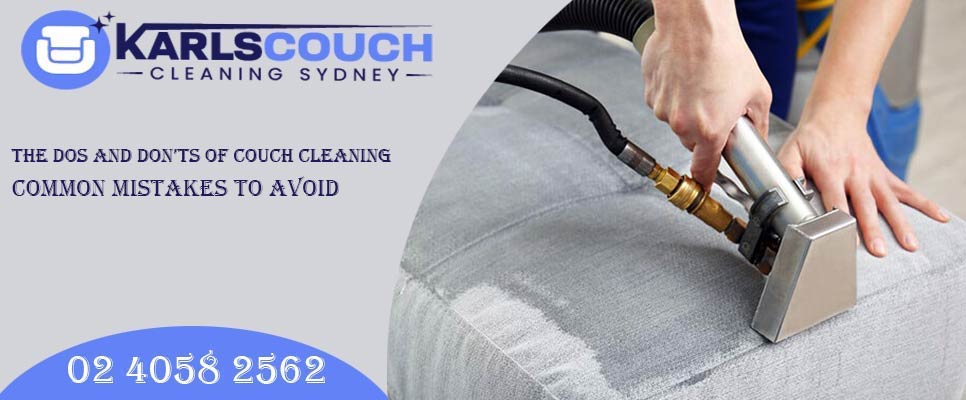Couch cleaning is important to maintain the hygiene and appearance of your furniture. However, there are some common mistakes that people make while cleaning their couches that can damage the fabric or make it look worse. You can read these dos and don’ts to avoid common mistakes while cleaning couches.

Here Are Some Dos And Don’ts Of Couch Cleaning
Dos:
- Vacuum your couch regularly to remove loose dirt and debris. Use a handheld or upholstery attachment for better results.
- Blot spills immediately with a clean cloth or paper towel. Don’t rub the spill as it can spread the stain.
- Test any cleaning solution on a small, inconspicuous area of the couch before applying it to the entire surface.
- Use a mild, water-based cleaning solution and a soft brush to clean stains and dirt.
- Follow the manufacturer’s instructions for cleaning the couch and check the label for the recommended fabric couch cleaning methods.
Don’ts:
- Don’t use abrasive cleaners or harsh chemicals, such as bleach, ammonia, or vinegar, as they can damage the fabric or cause discolouration.
- Don’t use too much water or cleaning solution, as it can soak into the cushions and cause mould and mildew.
- Don’t use a steam cleaner or hot water extraction method, as it can shrink the fabric or cause it to lose its shape.
- Don’t dry the couch in direct sunlight, as it can fade the fabric and cause it to become brittle.
- Don’t forget to protect your couch from spills and stains by using a fabric protector spray.
By following these dos and don’ts of couch cleaning, you can keep your furniture looking clean and fresh without damaging the fabric.
Follow These Steps To Clean A Couch Like A Pro
- Check the care label: Before cleaning your couch, check the care label to make sure you’re using the right cleaning method. Different materials require different cleaning techniques and products. For example, a leather couch requires a different cleaning approach than a fabric couch.
- Remove debris: Use a vacuum cleaner with an upholstery attachment to remove any debris or dust from the couch. Be sure to get into all the crevices and corners of the couch.
- Test cleaning solution: Test the cleaning solution on a small, inconspicuous area of the couch first to make sure it won’t cause any damage or discolouration.
- Apply cleaning solution: Apply the cleaning solution to the couch, starting with the most stained or dirty areas. Use a clean cloth or sponge and work in a circular motion. Be careful not to oversaturate the fabric or leather.
- Blot excess moisture: After applying the cleaning solution, use a clean, dry cloth to blot any excess moisture. This will help prevent water spots or damage to the couch.
- Allow to dry: Allow the couch to dry completely before using it again. You can speed up the drying process by using a fan or opening windows to increase air circulation.
- Fluff and vacuum: Once the couch is dry, fluff the cushions and vacuum the entire couch again to remove any remaining debris or dust.
By following these steps, you can clean your couch like a pro and keep it looking great for years to come.
Conclusion
Proper cleaning and maintenance of your couch are essential to prolong its lifespan and maintain its appearance. However, it is important to avoid common mistakes such as using harsh chemicals, over-wetting the fabric, or neglecting to read the care instructions. By following the dos and don’ts of couch cleaning, you can effectively remove stains and dirt while preserving the integrity of the material. Remember to regularly vacuum and spot clean, use gentle cleaners, and seek professional help when necessary. With these tips in mind, you can keep your couch looking and feeling great for years to come.
